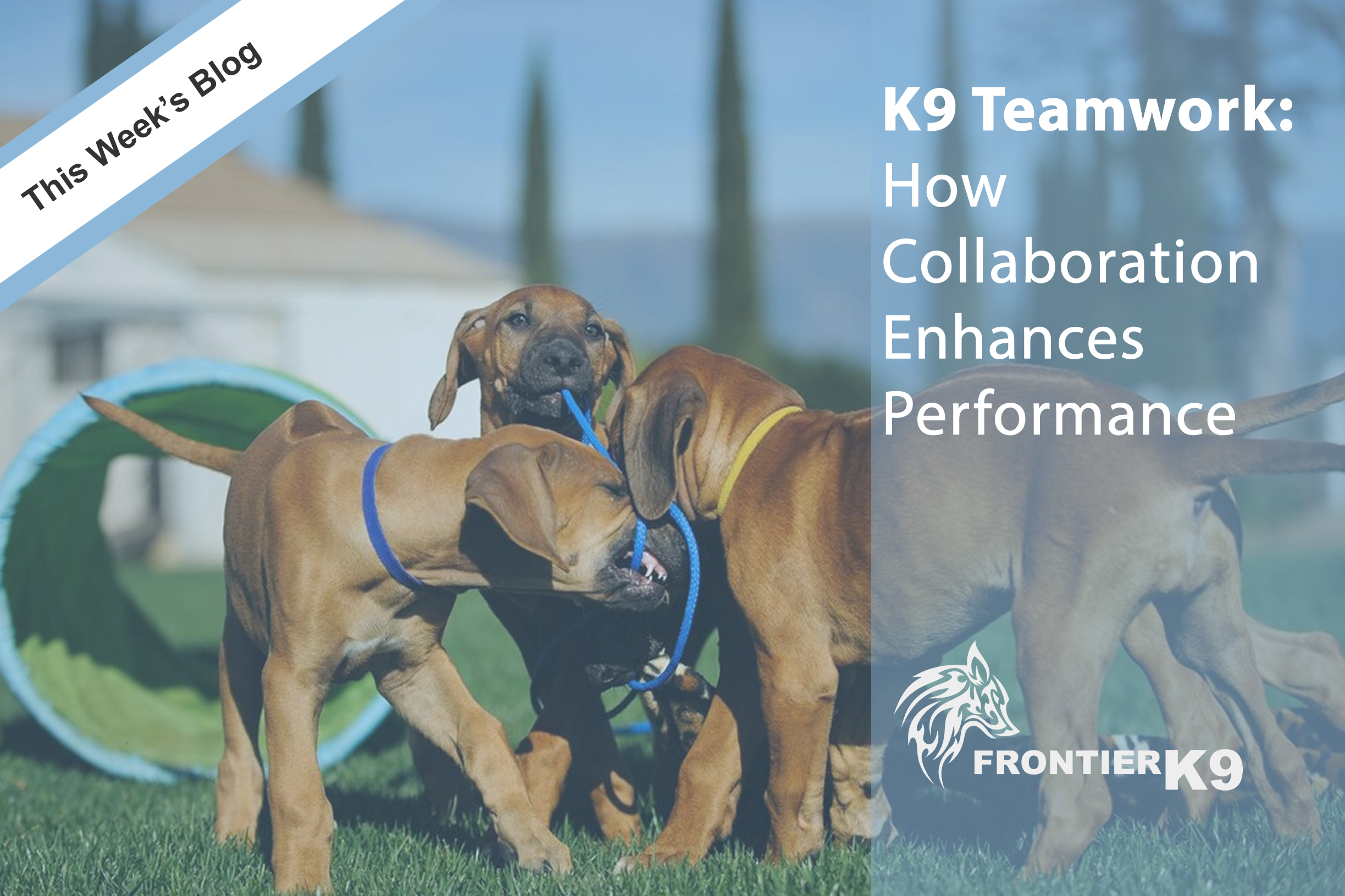The bond between a handler and their K9 partner is the foundation of any successful working dog team. While a dog’s skills and instincts are incredible, it’s the teamwork between the handler and the K9 that truly brings out the best in both. Together, they form an unbeatable duo, achieving goals that would be impossible for one to accomplish alone.
In this blog post, we’ll explore the critical role that collaboration plays in enhancing performance, as well as the ways handlers and their K9 partners work together to achieve remarkable results.
The Power of Trust in K9 Teamwork
At the heart of every effective K9 team is trust. A dog relies on its handler to guide it, communicate commands, and protect it in challenging situations. Likewise, the handler relies on the dog’s instincts, training, and keen senses. Without mutual trust, neither party can perform at their peak.
Handlers must trust their K9 partner to respond to commands swiftly and accurately, especially in high-pressure situations. This trust is built over time, through consistent training and positive reinforcement. In turn, dogs rely on their handlers for safety and guidance, knowing they can rely on their human partner in stressful environments.
Effective Communication: The Key to Success
While dogs can’t speak to us in words, they are exceptional at picking up on non-verbal cues and body language. Handlers must be able to communicate effectively with their dogs through clear and consistent commands, body posture, and even subtle hand gestures.
For example, when a handler signals a change in direction, the dog must immediately respond to the cue. This level of communication relies heavily on the handler’s ability to be clear and precise in their movements and commands. Likewise, dogs communicate with their handlers through body language, eye contact, and behavior signals, which helps handlers understand the dog’s needs, concerns, or findings.
This silent, yet powerful, form of communication allows handlers and K9s to work seamlessly together, even in noisy or chaotic environments where verbal commands might be difficult to hear or process.
Training Together: Strengthening the Partnership
K9 teams don’t simply meet and start working together. They undergo extensive training to build a rapport, learn to understand each other, and fine-tune their skills as a cohesive unit. This training process involves both the handler and the dog learning how to respond to one another’s actions, making them more intuitive when it counts.
Training typically includes:
-
Obedience: The foundation of teamwork, where the dog learns to follow commands, remain focused, and execute tasks in a variety of situations.
-
Task-Specific Skills: From drug detection to search and rescue, handlers and dogs train for their specific roles, building trust in their ability to perform under pressure.
-
Scenario-Based Exercises: Simulated real-world situations help handlers and dogs practice teamwork in environments that closely mimic actual tasks, improving their coordination and responsiveness.
By working together in training, both the handler and dog gain confidence in each other’s abilities, reinforcing the partnership that will be crucial in the field.
How Teamwork Improves Performance in the Field
The real-world applications of K9 teamwork are numerous and varied, but the key to success in any operation is collaboration. Here are a few examples of how this teamwork enhances performance:
1. Precision in Detection
In tasks like drug detection, explosives detection, or search and rescue, the teamwork between the handler and the dog is essential. The dog uses its keen sense of smell to locate substances or people, while the handler interprets the dog’s behavior and directs the search. A good handler knows when the dog has found a scent and how to adjust their approach accordingly to maximise the chances of success.
2. Safety and Protection
In high-risk situations, such as apprehending a suspect or entering a hazardous environment, K9s provide critical support for their handlers. A dog’s instincts can alert the handler to dangers they might not otherwise notice. In return, the handler ensures the safety of their K9 partner by protecting them from harm. This mutual support strengthens the overall safety and success of the mission.
3. Emotional Support in Challenging Situations
It’s not just the physical skills that make K9 teams effective – it’s the emotional bond. In stressful or emotionally taxing situations, such as after a traumatic event or during long shifts, both handler and dog provide comfort and reassurance to each other. This emotional support allows the team to stay focused, calm, and resilient, which ultimately leads to better performance in the field.
The Role of the Handler in Enhancing Teamwork
While dogs bring extraordinary abilities to the table, it’s the handler’s responsibility to ensure that the team functions at its best. Handlers must be observant, patient, and adaptable, always looking for signs of stress, fatigue, or changes in behavior that might affect their K9 partner’s performance.
Furthermore, handlers must continue their own training and education to keep up with new techniques and best practices in the field. A well-trained handler can respond to a K9’s needs, adapt to changing conditions, and help the team navigate challenges effectively.
Conclusion: The Ultimate Duo
The success of any K9 operation depends on the seamless collaboration between the handler and the dog. By building trust, communicating effectively, and training together, handlers and their K9 partners form a powerful team that can take on even the most complex and dangerous tasks. In a world where split-second decisions and high stakes are the norm, the bond between a handler and their K9 partner is the difference between success and failure.
At Frontier K9 Services, we recognise the value of teamwork and are committed to fostering these strong, effective partnerships through rigorous training, trust-building, and support. Whether it’s detecting hidden threats or saving lives, the teamwork between a K9 and handler is nothing short of remarkable.


